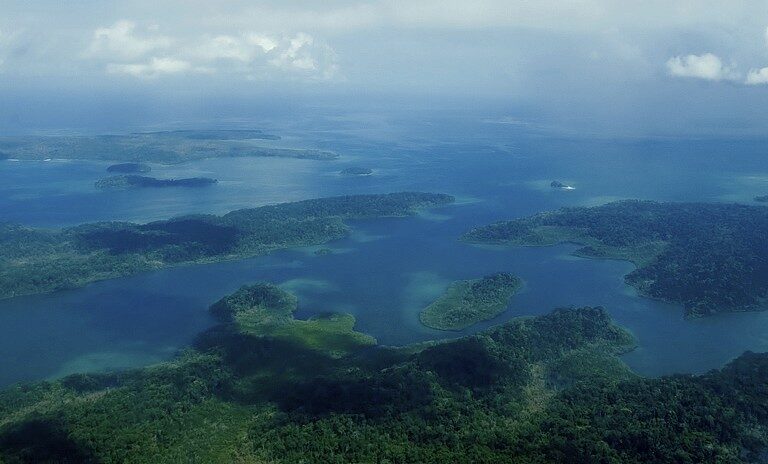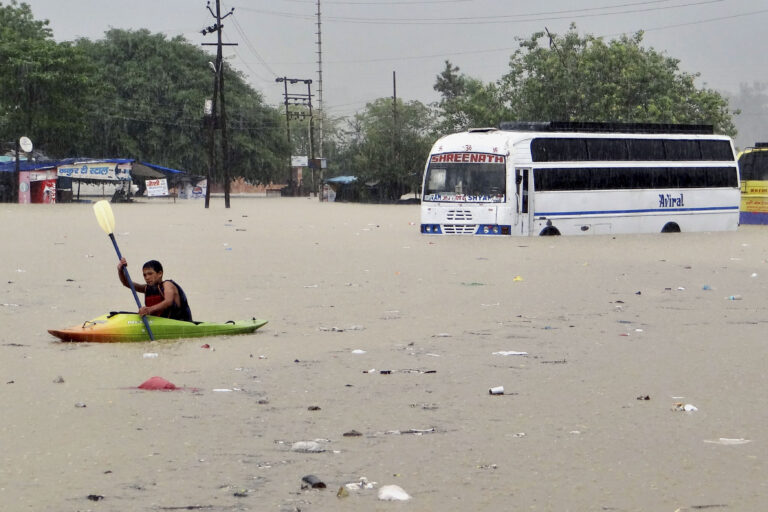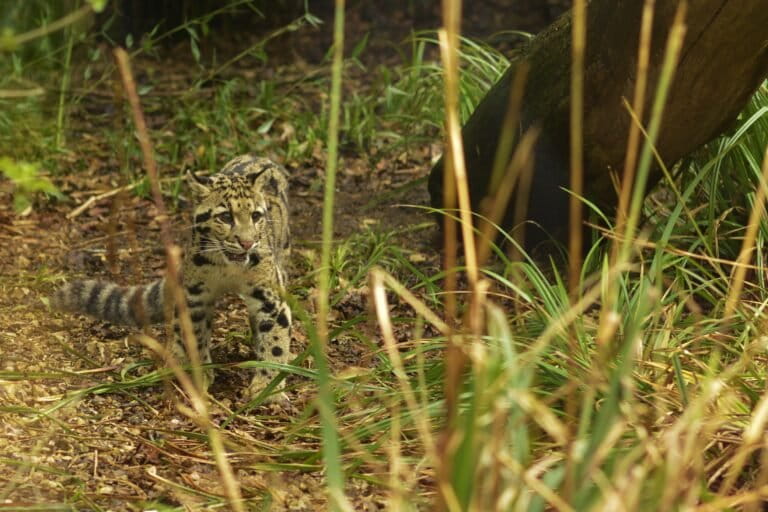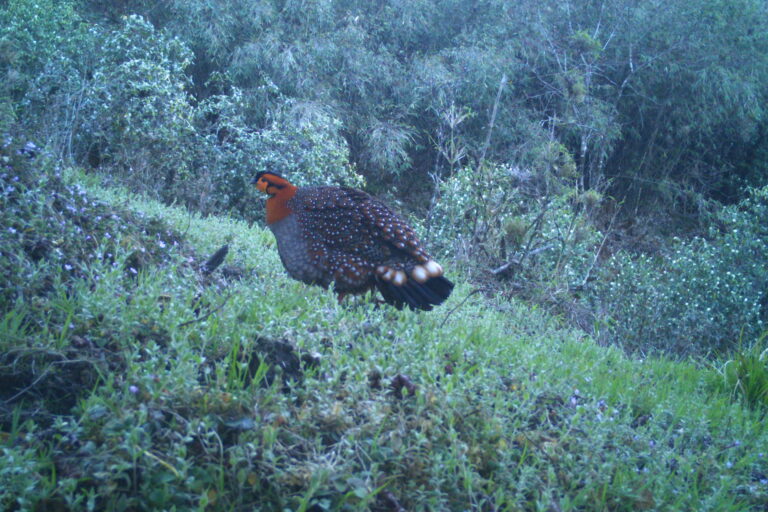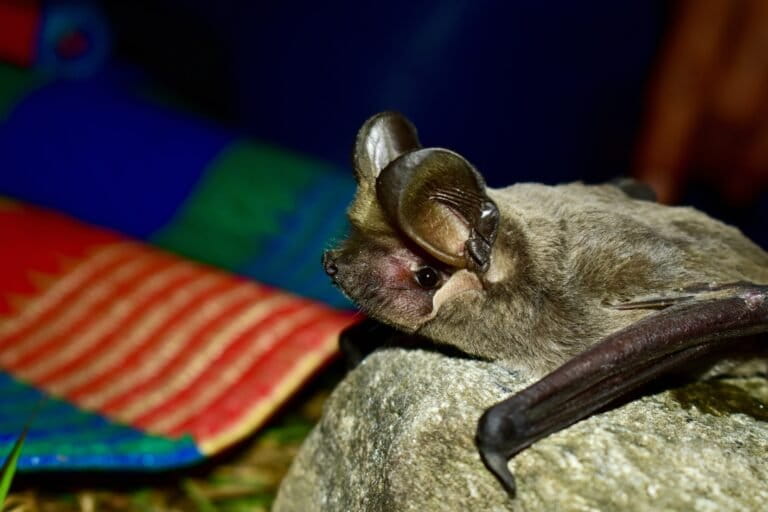- The red coral kukri (Oligodon kheriensis) is endemic to a small region of the Himalayan tracts of northern India and Nepal; the snake species was first spotted in Uttar Pradesh in India in 1936.
- For the first time, the rare species was found in Bangladesh in October 2020, which indicated an expansion of the snake’s distribution range.
- However, in northern Bangladesh, landuse patterns have changed, leading to habitat loss, forest degradation and fragmentation, which pose as major threats to the species.
- Experts suggest taking immediate conservation measures in the areas where the red coral kukri is found, by imposing specific measures to stop the destruction of bamboo bushes and forests.
In January, in Bangladesh’s northern district of Panchagarh, as a landlord was getting a bamboo bush cleared with an excavator to make space for a pond, two orange snakes came slithering out from the disturbed earth. The local residents assumed that bright snakes were venomous and killed them immediately. But these snakes, later identified as red coral kukri, are harmless and non-venomous. This was a rare sighting of the species in Sardarpara area of Atwari Upazila, Panchagarh.
Later, the excavator operator noticed more such snakes slithering out from underneath. The operator then asked the local residents to not kill those, instead called a local snake rescuer. Shahidul Islam, president of the Bangladesh Wildlife and Snake Rescue Team, rushed to the spot and rescued six coral kukri snakelets and their mother. Islam, who is locally known as ‘a friend of snakes’, released them into the wild.
The rare snake was first spotted in the Lakhimpur Kheri area of Uttar Pradesh in 1936. Researchers described it with the scientific name Oligodon kheriensis. The word ‘kukri’ in the snake’s common name comes from the kukri, or curved knife, of the Gorkhas, as its teeth are curved like the blade.
But, in Bangladesh, the red coral kukri was first found less than only three years ago, on October 27, 2020, when the residents of Boda Upazila in Panchagarh were digging the soil at a bamboo patch. Since then, the species has often been spotted in Panchagarh and Thakurgaon districts, both close to the Himalayan belt.
“I have rescued red coral kukri snakes more than 40 times from Panchagarh and Thakurgaon districts, although it was not found in Bangladesh before,” Shahidul told Mongabay.

Expanding distribution range
The red coral kukri, locally known as kamalavathi in Bangladesh, is a poorly studied snake species worldwide, as very few specimens have been recorded since its first discovery nearly 90 years ago. The snake species is endemic to the Himalayan tracts from northern India and Nepal.
The species has been found in Uttarakhand, Jalpaiguri of West Bengal, Kokrajhar of Assam, and West Garo Hills of Meghalaya. The snake was also reported in Chitwan National Park in south-central Nepal, Shuklaphanta National Park and Bardiya National Park in the far west, and Jhapa in southeastern Nepal. The presence of the snake in recent years in Bangladesh is an expansion of its distribution range.
The area where the recent sighting occurred in Bangladesh is 20 kilometres (12.4 miles) from the Indian border and 33 kilometres (20.5 mi) from the previous nearest sighting in Jalpaiguri of West Bengal, a 2021 study finds.
The distribution range of the red coral kukri comprises different habitats, including savanna, grasslands and Himalayan subtropical broad leaf forests. The areas have a predominantly warm and temperate climate with dry winters and hot summers. All the records have been reported from either forests or villages of the subtropical regions.
All locations of the previous reports ranged along the foothills of the Himalayas. There are no reports of the occurrence of O. kheriensis from Indo-Himalayan temperate or alpine regions and tropical regions of India and Bangladesh far apart from the Himalayas, the study revealed.
“The red coral kukri is only found 35-40 km [about 19-25 mi] south away from the Himalayan range, as its temperature and soil are suitable to its habitat,” said Borhan B. Romon, a co-author of the study.
The micro-habitats of the red coral kukri comprise moist rocky areas near streams of subtropical forest, forest edges, bushy areas of villages, house premises and croplands. But the snake is mostly found in bamboo groves in northern Bangladesh, as its micro-habitat is a moist vegetative area covered with leaf litter under bamboo patches.

Habitat destruction
Shahidul said all the red coral kukri snakes he rescued were from bamboo patches or households close to bamboo bushes, which suggests that that is the most suitable habitat for the orange-coloured snake in Bangladesh.
“I rescued the snakes from households when they had come from their dens beneath bamboo bushes in search of food during the night,” he said, adding that the red corals love to live in soft soil beneath bamboo patches.
The snake rescuer said locals in northern Bangladesh are destroying bamboo bushes to create ponds or arable land, forcing the snakes to come out of their dens and then accidentally killed by people.
A 2021 technical report found habitat degradation due to urbanisation and agriculture and intentional killing are the main threats to the species. The landuse pattern has changed in northern Bangladesh recently, putting the red coral kukri at risk.
“The habitats of this rare snake are being destroyed due to uncontrolled stone lifting, the introduction of tea gardening and cleaning up bamboo bushes there,” said Romon, a Venom Research Center scientist at Chittagong Medical College in Chattogram.
He said that when bamboo bushes are destroyed, the red coral snakes are forced to come out from their dens.
“The snake eats eggs and larvae of termites and ants. Tea gardens have used pesticides, destroying the snake species’ food. As a result, they suffer from the acute food crisis,” the snake researcher observed.

Conservation is an urgent need
In India, the red coral kukri is protected under the Wildlife Protection Act of 1972, but there is no conservation measure in Bangladesh or Nepal to protect the rare species.
In northern Bangladesh, forests are highly fragmented and most are entirely or partially isolated. Habitat loss, degradation and fragmentation are the major threats to the species. Romon feared the red coral snakes could be extinct locally due to their rapid habitat destruction, although there is no extensive research on the species.
The snake is being killed during agricultural excavation in Bangladesh. People kill the snakes because of ignorance, as they panic seeing the bright colours.
“While rescuing red corals, I suffered bites several times. It did not cause any harm to me, but people are killing the nonvenomous snake species indiscriminately,” Shahidul said.
He suggested taking immediate conservation measures in the areas where the red coral kukri is found by imposing specific measures to stop the destruction of bamboo bushes and forests.
Considering all the threats to the snake species, the 2021 study recommended taking some conservation measures for efficient protection of the species, saying the red coral species status should be assessed globally and regionally, it should be included in national and international legislation, and maximum protection should be given in the existing forest of Indo-Himalayan subtropical region.
Conservation approaches should be applied in the non-forested areas of the Indo-Himalayan subtropical region and, most importantly, local people should be aware of conservation efforts to save the species, the study suggested.
Read more: Mapping snakes in Uttarakhand for safer coexistence with humans
CITATION:
Romon, B. B., Chowdhury, M. A. W., & Al Haidar, I. K., 2021. First record of the Coral Red Kukri Snake Oligodon kheriensis (Reptilia: Squamata: Colubridae) from Bangladesh. Journal of Asia-PacificBiodiversity. https://www.sciencedirect.com/science/article/pii/S2287884X21000339
Limbu, K., Bhattari, S., Ghosh, A., & Limbu, K. P., 2021. Oligodon kheriensis, Coral Red Kukri Snake THE IUCN RED LIST OFTHREATENED SPECIES. International Union for Conservation of Nature. https://www.researchgate.net/publication/357085585_Oligodon_kheriensis_Coral_Red_Kukri_Snake_THE_IUCN_RED_LIST_OF_THREATENED_SPECIES
This article was first published on Mongabay.com.
Banner image: The red coral kukri (Oligodon kheriensis) is endemic to a small region of the Himalayan tracts of northern India and Nepal. Photo by Shahidul Islam.






